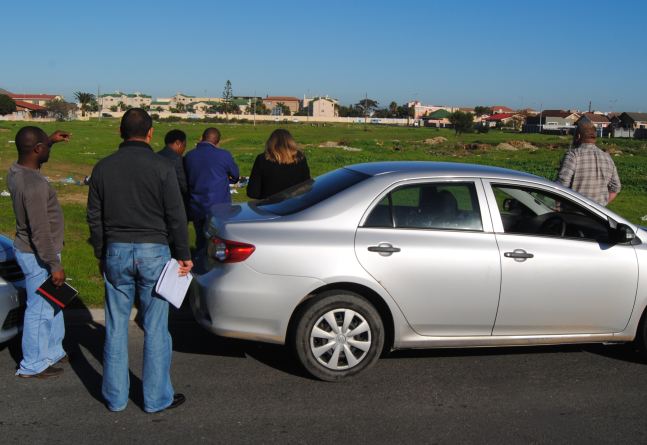
placeholder.jpg
Land is the HDA’s most important deliverable in terms of Outcome 8 – in the president’s 2010 State of the Nation Address he pronounced that “we plan to set aside over 6 000 hectares of well-located public land for low and affordable housing”. And this deliverable lies firmly on the shoulders of the HDA.
But how does the land value chain work and what exactly is the HDA’s role within this? In brief, the land value chain can be summarised in four stages: land identification; land transfer; land holding; and land development.
1. Land identification
The first step in this process is that properties are identified by the HDA to further investigate. The Agency also responds to requests regarding provincially and municipally identified land; occasionally we receive offers to purchase private land.
There is considerable desktop work that is done by HDA planners prior to undertaking a site visit, including communicating with the municipality to identify plans; using the Land and Property Spatial Information System(LaPSIS) to identify ownership; and mapping socio-economic amenities and surrounding land use within a 1km, 5km and 10km radius.
The Agency uses a set of criteria to establish whether land is well located or not, and the initial desktop exercise assesses whether enough criteria are met to warrant a site visit. LaPSIS is proving a very powerful tool in this regard because, with new enhancements, even physical attributes can be viewed from a desk and although this is not always real-time data, 90% of site visits prove that LaPSIS is indeed correct.
But physical site inspections are still necessary to satisfy the planners that the geophysical conditions and general status of the property is satisfactory.
2. Land transfer
If the land is deemed suitable, the next step, depending on ownership status, is to either formally request the land from the relevant state department, or if private land is involved, to establish whether the owner is willing to sell and what the asking price is.
Two valuations are commissioned on private land and a negotiation to establish a final purchase price is entered into with the owner/seller. Exco and the board then approve the acquisition and the agreement of sale is concluded with the owner agreeing to mode of purchase – either through issue of a guarantee or by transferring the purchase price into a trust account.
The next step is the issuing of clearance certificates by the municipality and the lodging of transfer documents at the deeds office for registration. Finally, registration and the transfer and issue of the title deeds then take place.
The transfer of state-owned land is much simpler and is done by means of an endorsement. Although transfer is simple, the process can take a long time because it is done by the state attorney’s office. Once the relevant minister has signed the submission, and before the actual endorsement that transfers title to the Agency, the HDA is in fact able to start the land preparation work.
3. Land holding
The holding costs and other responsibilities fall to the HDA on an agreed date and not upon endorsement. Once a property is transferred and released (formally or informally) to the HDA, we become responsible for the holding of the land. This involves normal asset management activities such as security, grass-cutting, securing from invasions, rates and taxes, and, on buildings, service charges.
4. Land development
A parallel process while holding the land is development planning. Once the land is released to us we must undertake the preparation of the land.
A team of development planning professionals is appointed. Town planners prepare layout plans; environmental impact assessments and geotechnical studies are done; and other specialist studies, depending on the conditions and circumstances of the land, are conducted. Land surveyors prepare general plans and peg the stands.
Once the township is approved, it is proclaimed and a township register is opened to ensure the erven can be registered at the deeds office.
Once the land-preparation processes are complete, the project is handed over to the Projects and Technical Support Services (P&TSS) unit for physical implementation. However, P&TSS is also brought on board during the land-preparation processes so it can get to know what is intended for the land and can gear up for the implementation phase.
There are also certain responsibilities that lie with P&TSS during the land-preparation stage, such as determining the status of bulk services capacity and making applications to Eskom for power, etc.
It sounds simple on paper, but at any given moment the LAM unit is identifying, verifying and submitting for release thousands and thousands of hectares of land.